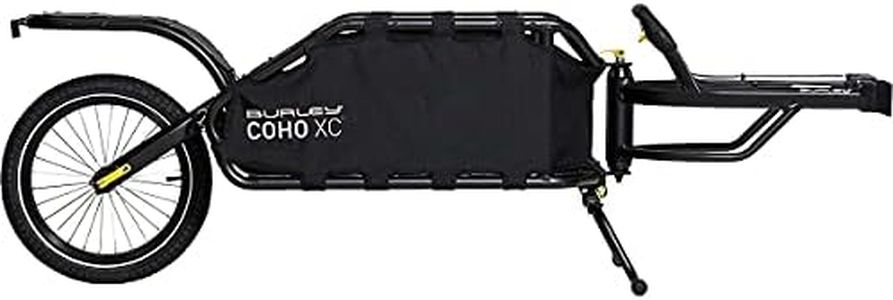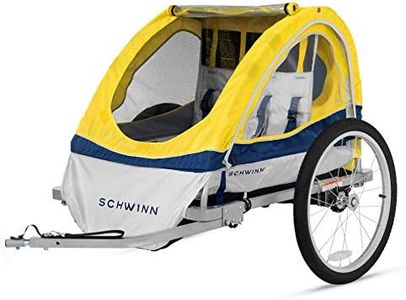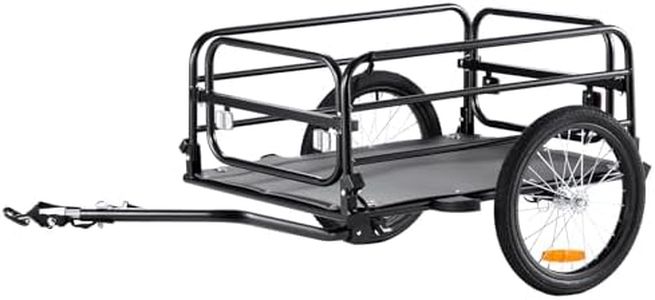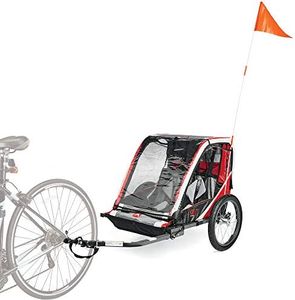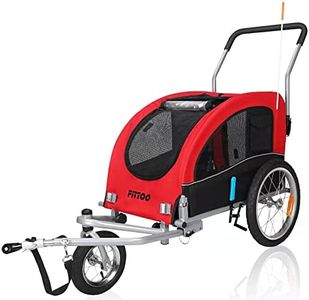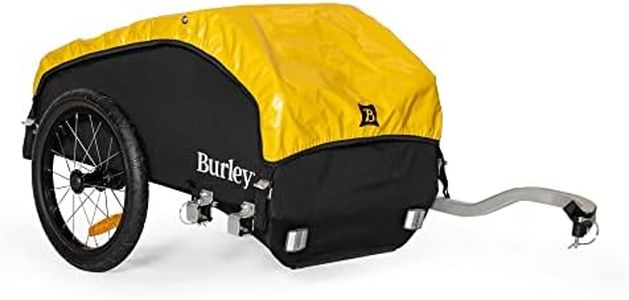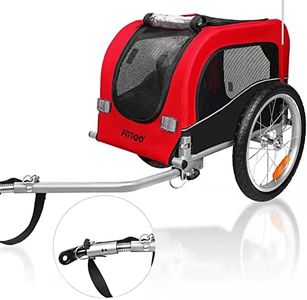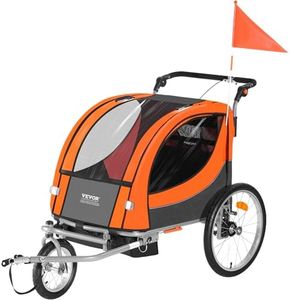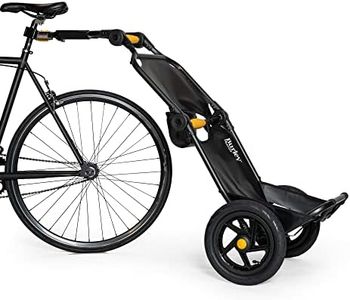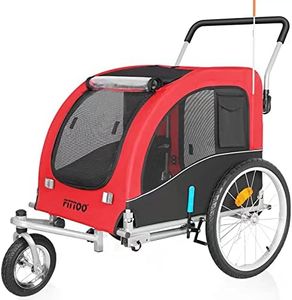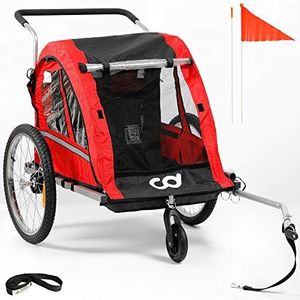We Use CookiesWe use cookies to enhance the security, performance,
functionality and for analytical and promotional activities. By continuing to browse this site you
are agreeing to our privacy policy
10 Best Bike Trailers
From leading brands and best sellers available on the web.By clicking on a link to a third party's website, log data is shared with that third party.
Buying Guide for the Best Bike Trailers
Choosing a bike trailer involves thinking about how you plan to use it, who or what you’ll be carrying, and the types of rides you’ll take. Some people want a trailer for transporting children, while others need one for carrying pets or cargo. Start by considering your main purpose and then look at important features to make sure the trailer matches your needs. Make your selection based on safety, comfort, ease of use, and compatibility with your bike.CapacityCapacity refers to how much the trailer can carry, both in terms of weight and number of occupants or volume for cargo. This spec is important because overloading a trailer can affect your bike’s handling and the overall safety of your ride. Trailers are usually rated for one or two children, a certain weight limit (often between 40 kg/88 lbs to 50 kg/110 lbs), or a set amount of cargo space. For child-carrying, make sure the trailer accommodates the number of kids and their combined weight; for cargo, think about the items you typically need to transport. Matching your regular load to the trailer’s capacity will help you avoid performance and safety issues.
Safety FeaturesSafety features include harness systems, roll cages, reflective materials, and flags. These features matter because they protect passengers in case of accidents and make the trailer more visible to cars. Harnesses can be either five-point or simpler three-point types: a five-point harness secures passengers better, especially active children. Roll cages add protection if the trailer tips, while reflective strips, bright colors, and safety flags increase visibility. Choose the highest level of safety for whoever or whatever you’ll carry, especially if you ride frequently on busy roads.
Attachment SystemThis refers to how the trailer connects to your bike. A good attachment system ensures the trailer stays secure and tracks properly behind your bike. Some trailers attach at the rear axle, while others connect at the bike’s frame. Axle attachments often maintain better bike balance and reduce the risk of the trailer tipping. It is important to check compatibility between your bike’s rear wheel or frame and the trailer’s hitch system. If you have multiple bikes or plan to change bikes often, pick a trailer with a universally compatible or easy-to-switch attachment system.
Wheel SizeWheel size affects the trailer’s ride comfort and ability to handle rough surfaces. Larger wheels (16 inches or more) roll more smoothly, handle bumps better, and are suitable for longer or uneven rides. Smaller wheels make the trailer more compact and slightly easier to store or transport but may give a bumpier ride on rough paths. If you plan to ride mostly on smooth, paved surfaces, either will work. But for longer rides or off-road trails, larger wheels will provide a more comfortable and stable experience.
SuspensionSuspension systems cushion the trailer against bumps and vibrations from the road or trail. A trailer with suspension keeps passengers or cargo from being jostled and makes for a smoother experience. Trailers without suspension may be lighter and less expensive but can pass more shocks from the surface to the contents. If you’ll be riding on bumpy or rough trails, or if you have young children or fragile cargo, opt for a trailer with suspension. For short, smooth commutes, suspension is less critical.
Weather ProtectionWeather protection includes features like rain covers, mesh screens, and sunshades. These features help shield passengers or cargo from rain, sun, dust, and insects. Some trailers have full enclosures with windows, while others offer basic mesh for airflow or simple covers only. Think about your climate and the most common weather you’ll face. For all-weather use or longer rides, pick a trailer with well-designed, easily adjustable covers. If you’ll only ride in good weather, basic protection may be enough.
Folding and StorageFolding and storage options determine how easy it is to put the trailer away when not in use or transport it in a car. Some trailers collapse flat or have quick-release wheels, making them easy to store in tight spaces or take in your vehicle. Consider how much room you have at home and whether you’ll need to pack the trailer into your car regularly. If space is an issue or you plan to travel with the trailer, prioritize compact folding features.
